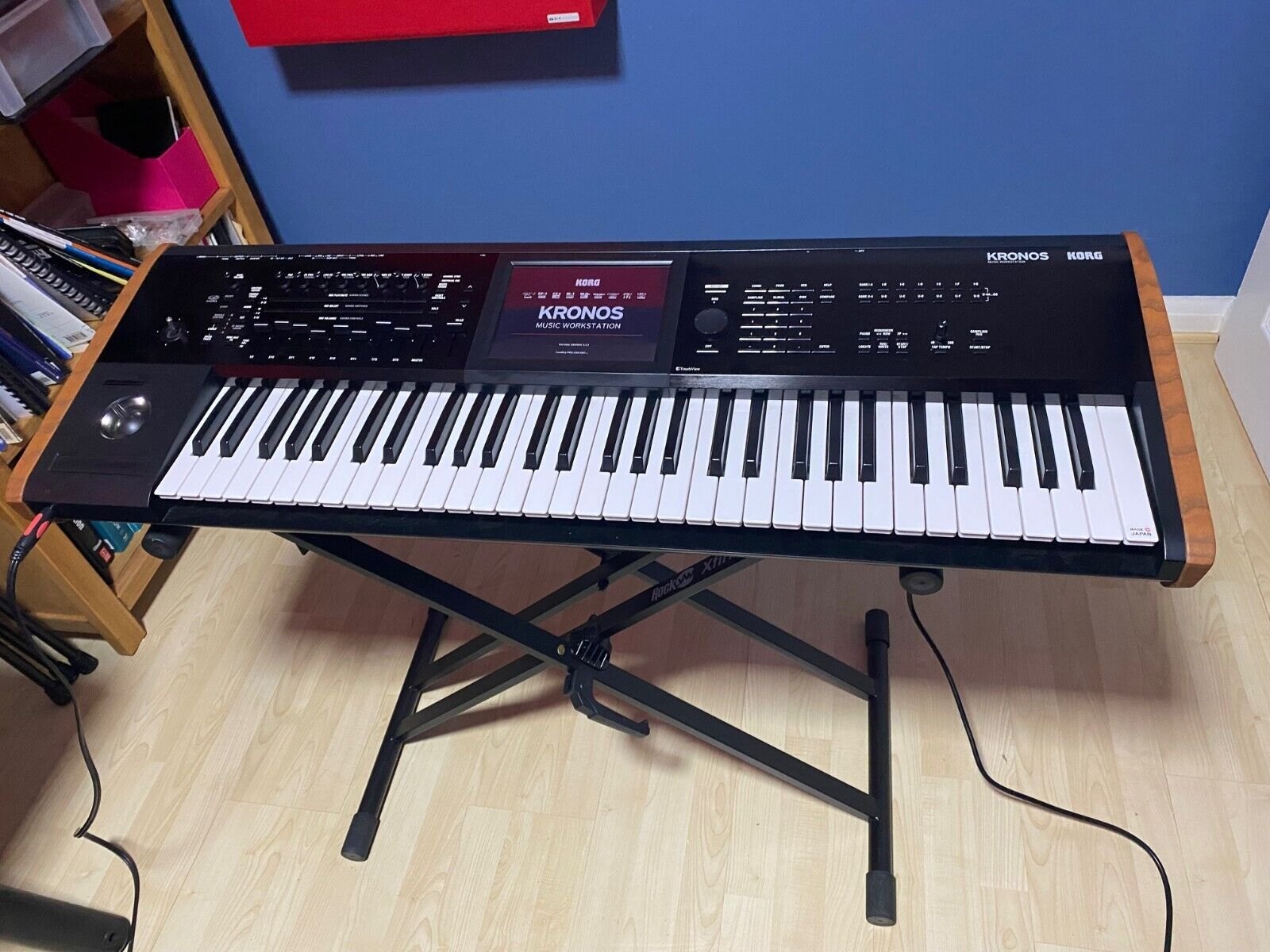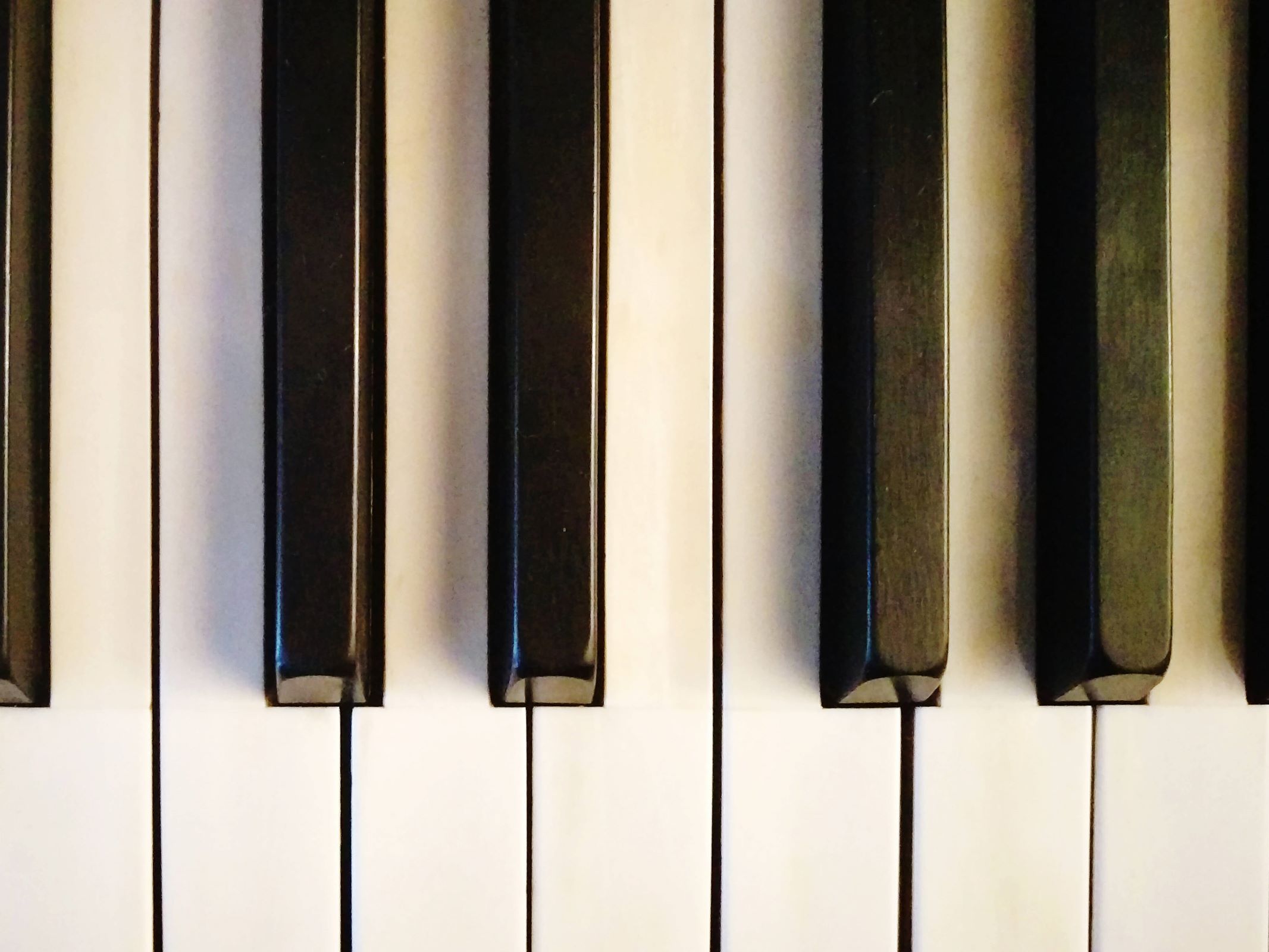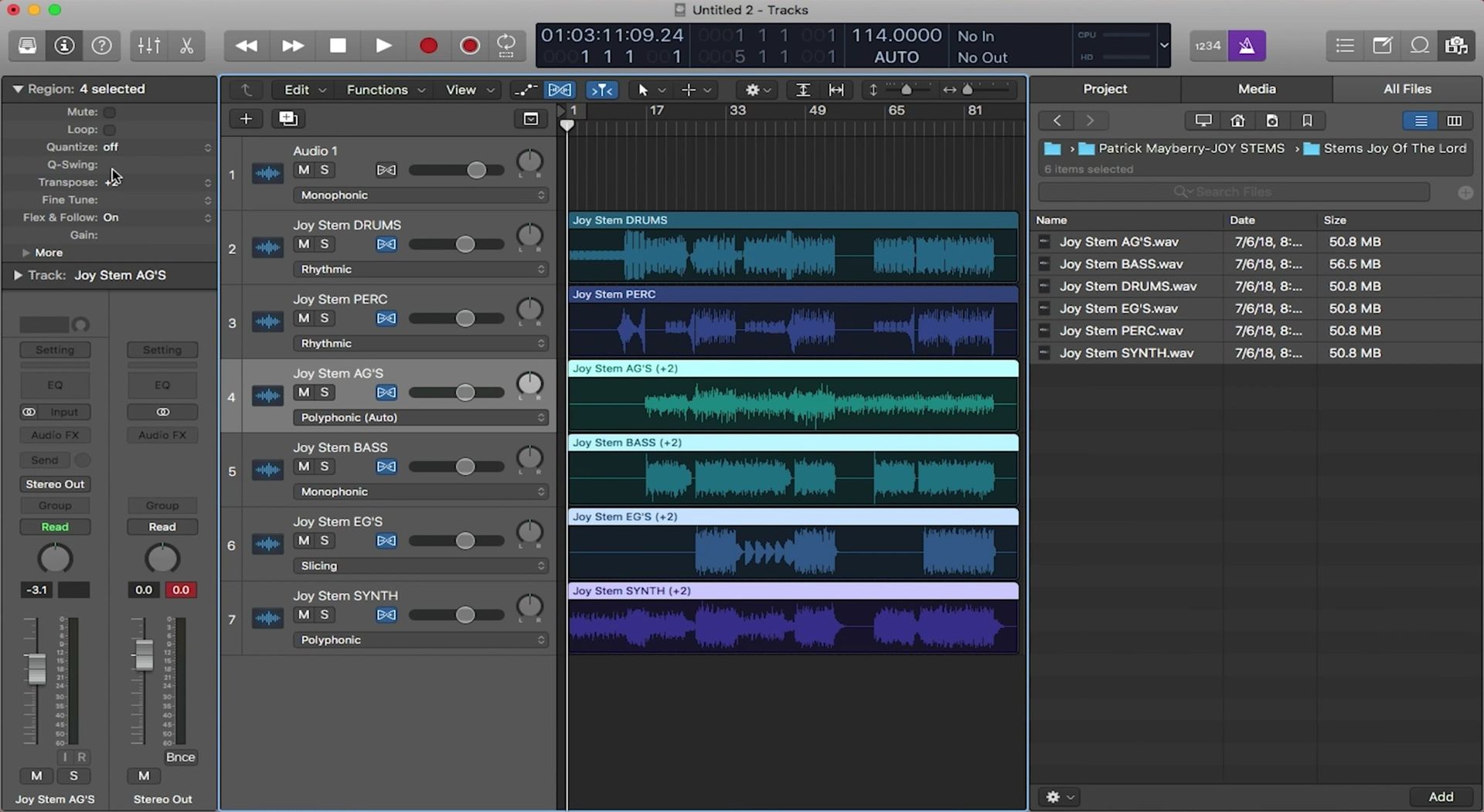Home>Instruments>Guitar>What Key Is The Guitar In


Guitar
What Key Is The Guitar In
Published: February 15, 2024
Discover the key of the guitar and learn how to transpose chords with our comprehensive guide. Find out how to play in different keys on the guitar. Unlock the secrets of guitar key transposition now!
(Many of the links in this article redirect to a specific reviewed product. Your purchase of these products through affiliate links helps to generate commission for AudioLover.com, at no extra cost. Learn more)
Table of Contents
Introduction
So, you've picked up your guitar, strummed a few chords, and now you're ready to take your playing to the next level. One fundamental aspect of understanding and mastering the guitar is knowing what key you're playing in. Whether you're jamming with friends, learning a new song, or composing your own music, having a solid grasp of keys and how they relate to the guitar is essential.
Understanding the concept of key in music is like having a map to navigate the musical landscape. It provides a framework for the notes, chords, and harmonies that make up a song. When you know the key of a piece of music, you have a foundation to build upon, allowing you to improvise, transpose, and communicate with other musicians effectively.
In this comprehensive guide, we'll delve into the intricacies of guitar keys, exploring key signatures, finding the key of a song, and even using a capo to change the key. By the end of this journey, you'll have a deeper understanding of how keys work on the guitar and how you can use this knowledge to enhance your playing and musical creativity. So, grab your guitar, tune it up, and let's embark on this enlightening exploration of guitar keys.
Understanding Key in Music
Before diving into the specifics of guitar keys, it’s crucial to grasp the concept of key in music. In simple terms, a key serves as the tonal center of a piece of music. It establishes a hierarchy of notes and chords, providing a sense of resolution and stability. When a song is in a particular key, it means that the melodies and harmonies revolve around a specific set of notes that create a cohesive and harmonious sound.
Each key has its own unique set of notes, known as the diatonic scale, which forms the basis for melodies and chord progressions within that key. For example, the key of C major consists of the notes C, D, E, F, G, A, and B. Understanding the relationship between these notes and how they fit together is fundamental to comprehending key in music.
Furthermore, each key evokes a distinct emotional quality. For instance, the key of C major is often associated with a bright and uplifting sound, while the key of E minor may convey a sense of melancholy or introspection. This emotional resonance adds depth and nuance to musical compositions and influences the way listeners interpret and connect with the music.
When playing the guitar, understanding key in music empowers you to navigate the fretboard with purpose and intention. It allows you to identify which notes and chords will complement a particular key, enabling you to improvise solos, construct chord progressions, and transpose songs to suit your vocal range or playing style.
By internalizing the concept of key in music, you’ll develop a heightened awareness of how different musical elements interact within a specific tonal framework. This awareness is invaluable for any guitarist seeking to expand their musical horizons and create engaging, coherent music.
Key Signatures
Key signatures are vital indicators that provide valuable insight into the key of a musical piece. They appear at the beginning of a staff, right after the clef symbol, and consist of sharps (#) or flats (b) that dictate which notes are to be consistently raised or lowered throughout the composition. By analyzing the key signature, musicians, including guitarists, can quickly discern the key of the music and adapt their playing accordingly.
Understanding the layout of key signatures is essential for guitarists, as it directly influences the chords, scales, and melodies they employ. For instance, a piece with a key signature of one sharp indicates that the song is likely in the key of G major or its relative minor, E minor. This knowledge allows guitarists to anticipate the chords and notes that are prevalent in the song, facilitating smoother transitions and improvisation.
Moreover, key signatures play a pivotal role in transposing music. If a guitarist needs to shift a song to a different key to accommodate a singer’s vocal range or to suit a particular playing style, the key signature provides a roadmap for making the necessary adjustments. By understanding the relationship between key signatures and transposition, guitarists can confidently manipulate the key of a song without losing its musical coherence.
It’s important to note that while key signatures offer valuable insights into the tonal center of a piece, they do not provide information about the specific chords or progressions used in the song. However, they serve as a foundational element for understanding the overall harmonic structure and tonal characteristics of the music.
For guitarists, recognizing and interpreting key signatures is a valuable skill that enhances their ability to interpret and perform a wide range of musical compositions. By honing this skill, guitarists can fluently navigate the diverse landscape of musical keys and harness the expressive potential of the instrument with confidence and proficiency.
Finding the Key of a Song
As a guitarist, being able to determine the key of a song is a valuable skill that enhances your ability to play and interpret music accurately. Several methods can help you identify the key of a song, allowing you to navigate the fretboard with confidence and creativity.
One approach to finding the key of a song involves listening closely to the tonal center. Pay attention to which note or chord sounds resolved and final. This sense of resolution often indicates the key of the song. Additionally, identify the most frequently occurring chord or note in the song, as it likely represents the tonic, or the root note of the key.
Another method involves analyzing the chord progressions used in the song. By identifying the primary chords and their relationships, such as the tonic, subdominant, and dominant chords, you can deduce the key in which the song is written. For instance, a song with the chord progression C major, F major, and G major likely resides in the key of C major.
Furthermore, paying attention to the melody can provide valuable clues about the key of a song. The notes and intervals used in the melody often align with the diatonic scale of the song’s key, offering insights into the tonal center and harmonic structure.
Utilizing tools such as a piano or digital tuner can aid in identifying the key of a song. By playing different notes or chords on the piano or using a tuner to identify the pitches, you can match the sounds in the song to the corresponding notes, helping you determine the key accurately.
Ultimately, developing a keen ear and a deep understanding of musical theory will significantly enhance your ability to find the key of a song. With practice and attentive listening, you’ll refine your skills in identifying keys, empowering you to approach a wide variety of musical pieces with confidence and musical insight.
Using a Capo to Change Key
For guitarists, the capo is a versatile tool that not only alters the pitch of open strings but also enables seamless key changes without the need to relearn chord shapes or scale patterns. This invaluable device allows musicians to play familiar chord shapes in different positions, effectively changing the key of a song while maintaining the original fingerings.
When using a capo to change the key of a song, it’s essential to understand its functionality and application. Placing the capo on a specific fret effectively raises the pitch of the open strings, thereby transposing the entire set of chords and notes to a higher key. For instance, by positioning the capo on the second fret and playing a G major chord shape, the resulting sound is an A major chord, effectively shifting the song up by a whole step.
One of the primary advantages of using a capo is its ability to accommodate singers with varying vocal ranges. If a song’s original key doesn’t suit a vocalist’s voice, the guitarist can employ a capo to raise or lower the key, making it more comfortable for the singer to deliver a compelling performance without compromising the integrity of the instrumental accompaniment.
Moreover, the capo allows guitarists to explore different tonalities and timbres without learning new chord shapes or scale patterns. By strategically positioning the capo, guitarists can unlock unique voicings and sonic possibilities, adding depth and variety to their musical repertoire.
It’s important to note that while the capo facilitates key changes, it does not alter the relationships between chords. This means that the harmonic structure and progression of the song remain consistent, regardless of the capo’s placement. As a result, the original character and mood of the music are preserved, offering a seamless transition to a new key.
By mastering the art of using a capo to change key, guitarists can adapt to diverse musical contexts and collaborate with vocalists and other instrumentalists more effectively. This versatile tool empowers musicians to expand their creative horizons and infuse their performances with flexibility and musicality.
Conclusion
Understanding the concept of key and its application to the guitar is a transformative journey that enhances your musical prowess and creativity. By delving into the intricacies of guitar keys, you gain a deeper appreciation for the harmonic structure of music and the versatile capabilities of the instrument.
Key signatures serve as invaluable guides, offering insights into the tonal center of a piece and empowering guitarists to navigate the fretboard with confidence and precision. These musical signposts provide a foundation for transposition and a deeper understanding of the harmonic relationships within a composition.
Identifying the key of a song is a skill that elevates your musical fluency, allowing you to interpret and play a wide range of music with insight and adaptability. Whether through attentive listening, analyzing chord progressions, or exploring melodic nuances, honing this skill opens doors to a rich tapestry of musical expression.
Furthermore, the capo emerges as a powerful ally in the guitarist’s toolkit, offering seamless key changes and unlocking new sonic possibilities without the need for extensive relearning. Its ability to accommodate vocalists, explore diverse tonalities, and preserve the integrity of a song’s structure makes it an indispensable asset for musicians seeking versatility and adaptability.
As you continue your musical journey, embracing the nuances of guitar keys enriches your playing, composition, and collaboration with fellow musicians. The knowledge and skills acquired through this exploration empower you to infuse your music with depth, emotion, and a profound understanding of the harmonic tapestry that underpins every musical masterpiece.
So, as you pick up your guitar and embark on your next musical endeavor, remember that the keys to unlocking new dimensions of creativity and expression are within your reach. Embrace the beauty of guitar keys, and let your music resonate with the vibrant tapestry of tonal possibilities.











